SPHERE-IOUSLY JUDY: A Major Las Vegas Stage Career Extended by New “Wizard of Oz”
Posted on: September 2, 2025, 12:41h.
Last updated on: September 2, 2025, 02:12h.
- Judy Garland had a long and storied career performing in Las Vegas
- She first performed in town at age 9 as part of the Gumm Sisters act in 1926
- After her movie career cooled, she headlined various showrooms throughout town until her death in 1969
- Today, Garland is back in the reimagined, interactive “Wizard of Oz” currently showing at the Sphere
Judy Garland was one of the most iconic Las Vegas performers of all time, renowned for her powerful voice and emotional stage presence. But all Las Vegas headliners are creatures of their time, framed by the styles, sounds, and social currents of their era. When the billboards come down and the marquees change, the memory of whatever magic they sparked onstage begins to fade, especially for those who weren’t there.
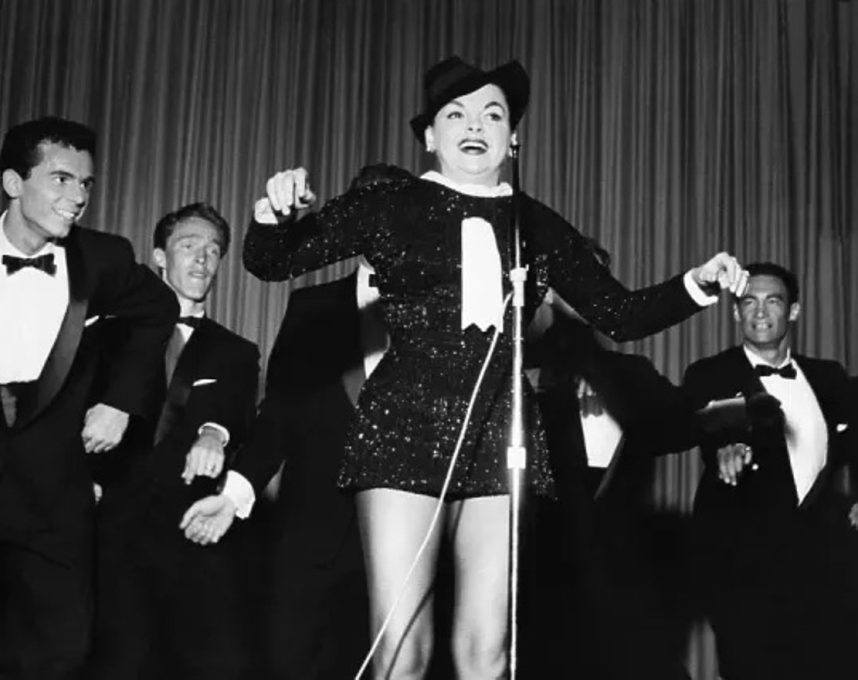
“The Wizard of Oz” lives outside the calendar. Since its 1939 premiere, its Technicolor dreamscape, archetypal characters, and universal themes — longing for home, courage, friendship — feel as fresh today as they once did to our great-grandparents.
“The Wizard of Oz” premiered last week at the Sphere. Subjecting this slice of evergreen culture to the most cutting-edge immersion technology ever imagined literally brings Judy Garland back to the Las Vegas stage in all her glory. It reinserts her into the city’s entertainment DNA, and we can’t think of a better time to revisit her Las Vegas legacy.
No Place Like Vegas
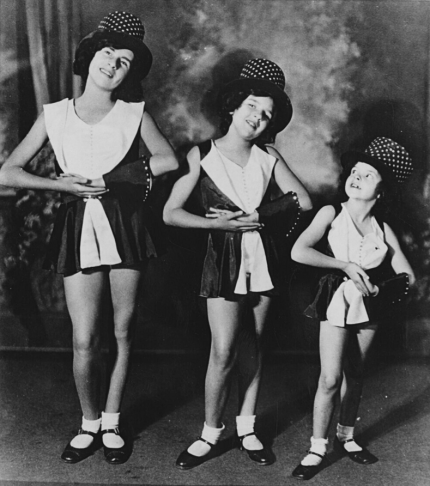
The Gumm Sisters were the first act to headline the Meadows Club near Boulder Highway just outside the city limits (convenient when you’re engaged in illegal activities such as serving alcohol). Their weeklong engagement began on July 10, 1931, according to the Nevada Historical Society, only two months after Nevada legalized gambling.
Mary Jane, Dorothy Virginia, and the youngest Gumm, 9-year-old Frances, were already an established act. Their mother, Ethel Gumm, who accompanied them on piano, managed tours of the West Coast vaudeville circuit for the young trio after the family relocated to Lancaster, Calif. in 1926.
Frances had been performing since the age of two at the family’s New Grand Theater in Grand Rapids, Minn., where she was regularly trotted out to sing “Jingle Bells.”
By 1934, the Gumm Sisters changed their names at the suggestion of comedian George Jessel, who recommended more appealing ones.
Garland is believed to have been inspired either by drama critic Robert Garland or actress Carole Lombard’s character, Lily Garland, in the 1934 film “Twentieth Century.” Frances’ new first name is believed to have come from the 1934 Hoagy Carmichael song, “Judy.”
Don’t Call It a Comeback
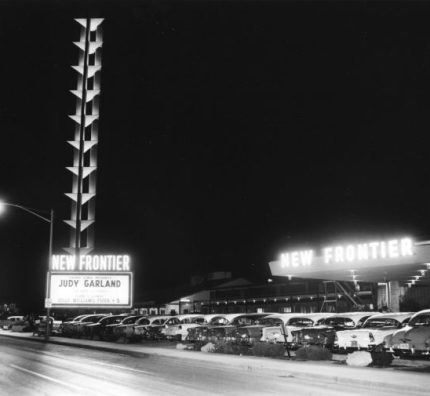
After her triumphant return to film in “A Star Is Born” (1954), Garland earned an Oscar nomination and critical acclaim, but the film’s box office underperformance and her ongoing struggles with MGM and Columbia left her between major studio contracts.
She was also navigating the fallout from years of overwork and a prescription drug dependency — so the traditional Hollywood pipeline wasn’t available.
In 1951, she returned to her roots as a chanteuse. She dazzled audiences and critics alike with sold-out engagements at the London Palladium and New York’s Palace Theatre (a 19-week run that earned a special Tony Award).
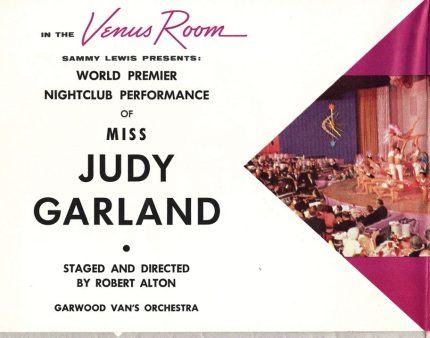
This re-established her viability as a live performer and set the stage for her second Las Vegas debut, on July 16, 1956, at the Venus Room at the New Frontier.
The show, backed by Jack Cathcart’s orchestra, included two production numbers as well as hits from Judy’s Capitol Records catalog — classics like “The Trolley Song” and “Come Rain or Come Shine” — and, as an encore, of course, “Over the Rainbow.”
In between, she candidly joked about her life.
Tickets for the monthlong engagement were in such high demand that 7,000 people had to be turned away at the box office, and a fifth week was added.
Judy earned $55K per week ($650K today), making her the highest-paid entertainer in Las Vegas history at the time.
The Rat Pack is Backup
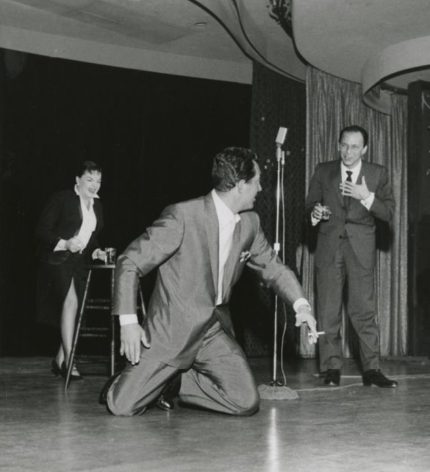
Judy returned to Las Vegas for a three-week engagement at the Flamingo from May 11 to June 1, 1957. But if any one night epitomized the peak of her Las Vegas powers, it was Oct. 10, 1958.
During a two-week engagement at the Copa Room at the Sands Hotel, Judy was joined on stage by none other than Frank Sinatra and Dean Martin.
Sinatra had been a close friend of Judy’s since his days running with the original Rat Pack, of which Judy was an honorary member.
As part of the act, the pair play-heckled Judy from the audience, then joined her on stage.
The exact songs performed during this historic summit are lost to history. However, given the trio’s 1962 collaboration on “The Judy Garland Show,” medleys of “You Made Me Love You”/”For Me and My Gal”/“The Trolley Song” and “Swanee”/”San Francisco” are a good bet.
Final Bows

Garland’s Vegas career continued at the Sahara’s Congo Room for two weeks in July and August of 1962 and another two weeks in June 1965.
The second Sahara engagement marked the start of the most precarious phase of Garland’s life. Her CBS television show had been canceled a year earlier. She was navigating financial strain, health issues, and tabloid scrutiny. And her sister, Mary Jane, committed suicide by drug overdose in Las Vegas in May 1964.
Reports described Judy’s performance as fragile but magnetic, with moments of brilliance punctuated by visible exhaustion. Her voice wasn’t the crystalline belt it once was. It had deepened in tone due to decades of smoking, but it had also deepened emotionally.
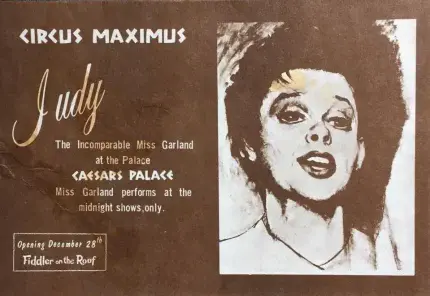
Beginning on Nov. 29, 1967, Judy played the Circus Maximus showroom at the year-old Caesars Palace. She was backed by a 27-piece orchestra conducted by Mort Lindsey, her longtime musical director, and by her children, Lorna and Joey Luft, who dueted with her on select numbers. (By then, Liza Minelli was carving out her own career independent from her mother’s.)
The engagement wasn’t intended as Judy’s Las Vegas swan song — just as part of a tour she would bring to Europe in 1969.
However, three months after that tour ended, on June 22, Judy succumbed to an accidental overdose of barbiturates at her home in London.
No comments yet